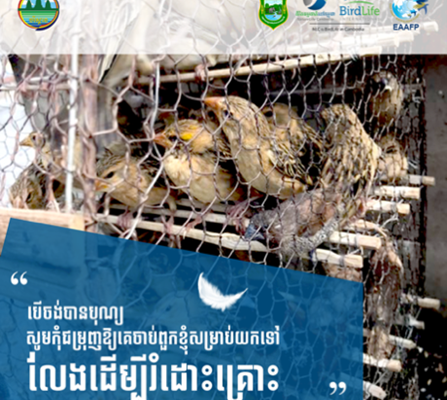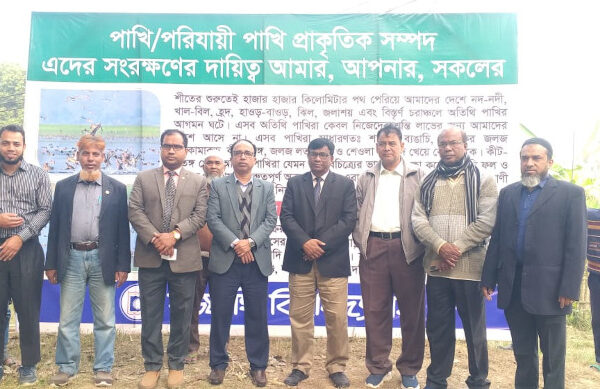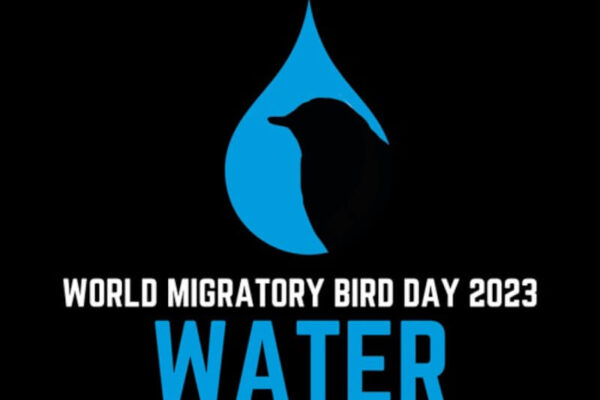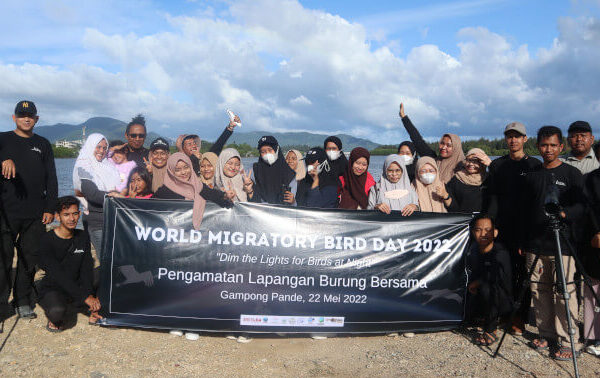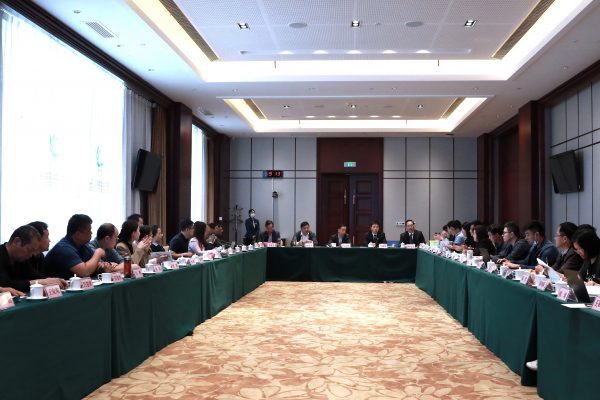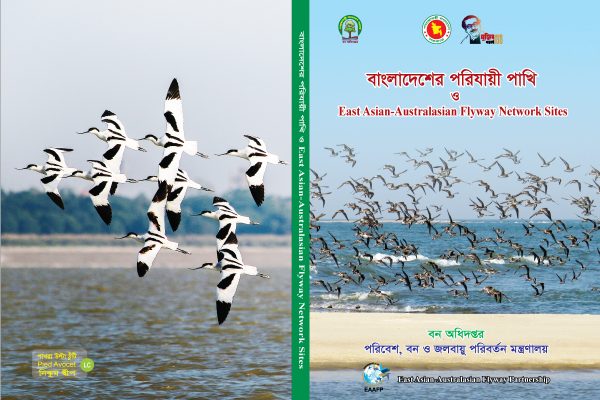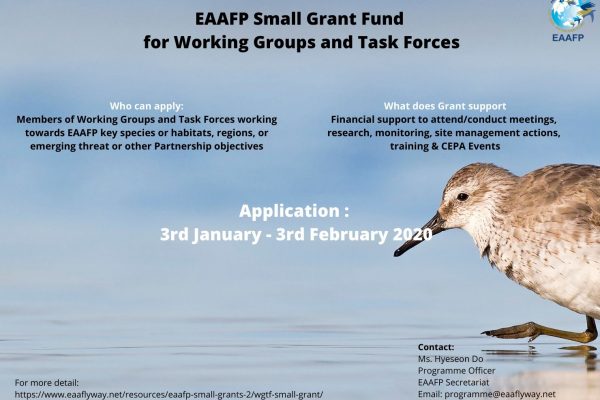-
Strengthening And Raising Awareness On Migratory Birds Trading Or Hunting Through Building The Capacity To Relevant Stakeholders In Cambodia
2020 EAAFP Small Grant Fund Project by Phallis Eang General Directorate of Natural Protected Area, Ministry of Environment, Cambodia Cambodia is located along the EAAFP and has become Partner of the East Asian-Australasian Flyway Partnership (EAAFP) since 2007. Cambodia wetlands provide essential habitats or the stopover site for many migratory birds including Great Knot, Nordmann’s greenshank, Asian Dowitcher, Black-tailed Godwit, Eurasian Curlew, Sandplover spp., Chinese Egret, Bar-tailed Godwit, Yellow-breasted Bunting, etc. as well as short distance migratory bird like Sarus Crane. To date, there are five wetlands which had been designated as Ramsar Sites and one designated as EAAFP Flyway Network Site. Cambodia is rich in biodiversity and more than 600 bird species were recorded including land and waterbirds. However, there is little known about migratory bird hunting and trading. The relevant legislations related to illegal hunting are in place, but the dissemination on the illegal hunting of migratory waterbirds is limited. Under EAAFP small grant project, an online workshop on bird identification and relevant regulation on illegal trading of wild birds were organized by the General Directorate of Administration for Nature Conservation and Protection, Ministry of Environment Cambodia in order to provide the capacity building to relevant authorities as well as raising the awareness to public. The overall objective of the workshop is to provide capacity building to site managers and rangers on the bird identification and relevant regulation on illegal trading of wild birds as well as share that knowledge to relevant people in their working stations. The workshop was precise over by H.E. Kim Nong, Director General of General Directorate of Natural Protected Area, with 90 participations from 7 departments under General Directorate of Natural Protected Area, Department of Environmental Knowledge, Department of Community Livelihood, Department of Biodiversity, Department of Environmental Information and Dissemination, Department of Ecotourism, 12 Provincial Department of Environment such as Takeo Province, Kampot Province, Kep Province, Koh Kong Province, Battambang Province, Kampong Thom Province, Siem Reap Province, Stueng Treng Province, Kampong Cham Province, Tboung Khmom Province, Banteay Meanchey Province and Prey Veng Province, relevant NGOs including BirdLife International, NataureLife Cambodia, WWT, WCS, WWF, WA, WEA, as well as acadmics from the Pannasastra University of Cambodia and the Royal University of Agriculture. Three training presentations were delivered by the trainers. The first presentation was delivered by Mr. Hong Chamnan on the basic of waterbirds identification. The next presentation was provided by Dr. Ding Li Yong from BirdLife International Asia and his presentation focused on the results of illegal bird hunting situation in Southeast Asia. The last presenter was Mr. Sou Sontara who present on the relevant laws and regulations related to illegal bird hunting in Protected Areas. A number of awareness-raising materials focused on illegal trading and hunting of migratory birds were produced. Those included the video and posters which were developed and designed by youths. The posters were provided to relevant institutions especially to the Provincial Department of Environment and wetland site managers for awareness-raising purposes while the video was public in the social media platform reaching more than thousand public. Through the training workshop, relevant departments, provincial department of environments, wetland site managers, rangers, academics and other participants who attended this workshop gained knowledge and understanding of the waterbird identification and relevant regulation on illegal trading of wild birds. They would share the knowledge with their colleagues and relevant people who work in the same field. Moreover, through the dissemination of posters and awareness videos, the public awareness of the disadvantages of illegal trading and hunting of migratory birds and also the negative impact of wild bird consumption on their health. The results from this project will contribute to the effort of reducing illegal trading and hunting of migratory birds. In addition, the trainees who are working on the ground will continue to share the knowledge and information from the workshop with their community. It is recommended to conduct more training and dissemination workshops on law and regulation related to illegal hunting, trading and consumption of wild birds and involved more relevant people especially the site manager and rangers who work on the ground. It is one of the effective mechanisms to sustainably protect and conserve the migratory waterbirds for illegal hunting and trading. It is also recommended to organize a series of education and awareness-raising activities or campaigns at the ground level and to the local communities. In addition, more research studies on the hunting and trading of migratory waterbird species should be conducted to provide data and information for supporting the decision-making and policy development. Web link: https://www.moe.gov.kh/index/32753 Facebook Post: https://www.facebook.com/314699302002531/posts/2096349793837464/ Video: https://fb.watch/j5qQMKaG1v/ Awareness-raising posters were designed and disseminated to local stakeholders © Ministry of Environment, Cambodia H.E. Kim Nong, Director General of General Directorate of Natural Protected Area, provided opening speech during the workshop on bird identification and relevant regulation on illegal trading of wild birds © Ministry of Environment, Cambodia Trainers and Guest speakers delivered the presentation lecture to participants during the training workshop © Ministry of Environment, Cambodia Participants to the online workshop on bird identification and relevant regulation on illegal trading of wild birds © Ministry of Environment, Cambodia The project was funded through the 2020 EAAFP WG/TF Small Grant Fund. View the report, Click here.
Continue reading -
Not a Threat: How Vegetation Expansion affecting the pattern of Habitat Used by Migratory Waterbirds at Pantai Cemara, Jambi
EAAFP Small Grant Fund Project by Cipto Dwi Handono EKSAI Foundation Spotted Greenshank (Tringa guttifer) recorded at Pantai Cemara, Jambi during this research (November 2021) © Cipto Dwi Handono In 2021 EKSAI Foundation received a small grant fund from the EAAFP to evaluate the potential threat of vegetation expansion on the mudflat of Pantai Cemara, Jambi. From the monitoring in 2020, EKSAI Foundation recorded a massive growth of Ipomoea sp., that later identified as Ipomoea pes-carpae together with a decrease of migratory waterbirds number at Pantai Cemara, Jambi. From 4 days of monitoring and vegetation analysis at Pantai Cemara, Jambi, EKSAI Foundation recorded 35 species of migratory waterbirds and a maximum count of 3.445 birds at Pantai Cemara, Jambi. This result shows a stable number from 2020 which recorded 2.836 birds from 30 species. EKSAI Foundation also recorded two new species that had never been recorded at Pantai Cemara before: Lesser Crested Tern and Broad-billed Sandpiper. Vegetation analysis done by EKSAI Foundation shows that all of the vegetation on site are native species: Ipomoea pes-carpae (the most dominant species on mudflat), Sea-pine, and Avicennia sp. Ipomoea pes-carpae was recorded as invasive in three countries: Spain, Anguilla, and South Africa (Dana, et al., 2020; Connor et al., 2021; and Foxcroft et al., 2020), hence, the result from this monitoring can not prove that ipomoea pes-carpae are invasive and threat the migratory waterbirds community at Pantai Cemara, Jambi. Despite that result, EKSAI Foundation notices that vegetation growth still affects the birds, especially in migratory waterbirds' habitat use and selection. In fig. 01 : (1), (2), and (3) we can compare the mudflat area used by migratory waterbirds at Pantai Cemara, Jambi in 2019, 2020, and 2021. Fig 01. (1) Vegetation and migratory waterbird in 2019 Fig 01. (2) Vegetation and migratory waterbird in 2020 Fig 01. (3) Vegetation and migratory waterbird in 2021 From fig 01, we can see that the migratory waterbird flocks are shifting following the vegetation growth to find the remaining open mudflat at Pantai Cemara, Jambi. Together with the vegetation growth, the team of EKSAI Foundation found a new-form mudflat that was used by migratory waterbirds flock in 2021. This new-form mudflat is formed on the southeast side of Pantai Cemara. We need to continuously survey to monitor the vegetation and mudflat at Pantai Cemara, so we can understand the pattern of migratory waterbirds' habitat at Pantai Cemara. This information is very valuable for migratory waterbirds’ habitat management. Conclusion The expansion of vegetation especially Ipomoea pes-carpae growth at Pantai Cemara Jambi does not identify as a threat to migratory waterbirds, yet still affects the area used by migratory waterbird flocks at Pantai Cemara, Jambi. Based on the interview with local people, a large land clearing near Desa Cemara might cause the increase of organic waste in the river and estuary that possibly be a cause of the increase of vegetation growth at Pantai Cemara, Jambi. During this research, we identify 35 species of migratory waterbirds with a maximum count of total migratory waterbirds is 3.445. This result shows that the migratory waterbirds number from 2020 to 2021 is stable and tends to increase through the vegetation is still growing intensively. The result from this research does not show that the vegetation growth threatened the migratory waterbirds community, but still affects the area used by migratory waterbirds due to the mudflats covered by Ipomoea pes-caprae and other vegetation at Pantai Cemara. The local government and local agencies responsible for the management of Pantai Cemara are committed to proposing this area to be a new Flyway Network Site in Indonesia in 2022, our team will help and follow up this commitment and help to compile the SIS together with all the responsible authorities. The project was funded through the 2021 EAAFP WG/TF Small Grant Fund. View the report, Click here. For inquiries, contact Cipto Dwi Handono at ciptodwihandono@gmail.com
Continue reading -
A migratory bird awareness-raising campaign at Rajshahi University, Bangladesh
Birds and Migratory Birds are Natural Resources; The responsibility of their conservation is mine, yours, everyone's – RU Pro-vice Chancellor Prof. Dr. Md. Sultan Ul Islam At the beginning of winter, the migratory birds arrive in our country's rivers, canals, banks, reservoirs and vast grasslands after travelling thousands of kilometres. These migratory birds flew a tough journey, and because of their arrival, the natural balance is preserved and our nature and environment become lively with their chirping sound. A campaign was conducted at Narikelbaria campus of Rajshahi University on Sunday (25th December, 2022) to raise awareness among all about the conservation of wildlife including migratory birds. Rajshahi University Pro-vice Chancellor Professor Dr. Md. Sultan Ul Islam inaugurated this campaign as the chief guest. Group photo of campaign participants ©️ University of Rajshahi, Banglades Dean of Faculty of Veterinary and Animal Sciences of Rajshahi University and President of Bangladesh Livestock Society Professor, Dr. Md. Jalal Uddin Sarder presided over the campaign. Another Pro-vice Chancellor Professor Dr. Md. Humayun Kabir attended as a special guest, RU Proctor Dr. Ashraful Islam, Assistant Proctor Ariful Islam and General Secretary of Bangladesh Livestock Society and President of Bangladesh Biodiversity Conservation Federation (BBCF), Rajshahi andRepublic of Korea Chief of Narikelbaria Campus, Md. Hemayatul Islam Arif, were also present among others. In this occasion, the staff of RU Narikelbaria along with various levels of teachers and students of the Faculty of Veterinary and Animal Science also participated in this event. Group photo of participants ©️ University of Rajshahi, Bangladesh During the event the guests said that their aim was to promote awareness activities among the public, visiting students and the general public of the concerned area, to learn about the benefits of migratory birds to our nature and to preserve their safe havens. The chief guest of the program Prof Sultan Ul Islam expressed his conviction to make the birds’ habitats more beautiful in the future. Article prepared by the University of Rajshahi, Bangladesh
Continue reading -
World Migratory Bird Day 2023 to Focus on Water
World Migratory Bird Day 2023 campaign will focus on the topic of water and its importance for migratory birds. Water is fundamental…
Continue reading -
A video ‘Migratory Birds and Wetlands of Baengnyeong Island’ released by Green Korea Incheon
On 7th July, Green Korea Incheon, one of EAAFP Foundation’s 2020 Small Grant Fund grantee organization released a video ‘Migratory Birds and Wetlands of Baengnyeong Island’. The video is…
Continue reading -
UNDP – GEF flyway project kicked off to strengthen the network of protected areas for migratory waterbirds in EAAF in China
On May 11th, the largest standalone GEF-7 biodiversity project…
Continue reading -
World Migratory Bird Day 2021 invites us to reconnect with Nature by appreciating “bird songs and flight”
The World Migratory Bird Day (WMBD), a global annual campaign is held on every second Saturday of May and October, to raise awareness of migratory birds and calls for…
Continue reading -
Bangladesh Government published “Migratory Birds in Bangladesh and East Asian-Australasian Flyway Network Sites”
Bangladesh is occupying a unique geographical location in South Asia. The country with…
Continue reading

